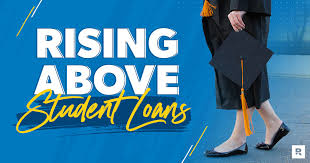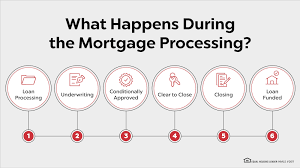In today’s America, the student loan crisis looms large over millions of families, with total student debt exceeding $1.7 trillion. Amidst this financial challenge, Dave Ramsey’s student loan advice and his debt-free degree philosophy have become increasingly prominent.
As a leading voice in personal finance, Ramsey advocates for a radical approach: completing college without borrowing a single dollar. But how realistic and applicable is this advice in today’s educational landscape?
This comprehensive analysis will examine Ramsey’s philosophy, its practical applications, and its limitations in the modern context.
Skale Money Key Takeaways
Before diving deep into Dave Ramsey’s student loan advice, here are the essential points to remember:
- Complete debt avoidance is possible but requires significant planning and commitment
- Community college can save substantial money in the first two years
- Working while studying is a cornerstone of the debt-free approach
- Scholarships and grants should be aggressively pursued
- The strategy works best with extensive preparation and family support
| Ramsey’s Approach | Traditional Approach |
| Pay cash for college | Use student loans as needed |
| Start at community college | Begin at 4-year university |
| Work while studying | Focus solely on studies |
| Live at home if possible | On-campus experience |
| Choose affordable schools | Choose dream schools |
Table of Contents
Understanding Dave Ramsey’s Core Philosophy on Student Loans
At the heart of Dave Ramsey’s student loan advice lies a fundamental belief: debt is not a tool but a burden that limits future opportunities and financial freedom. His philosophy stems from personal experience and decades of counseling individuals struggling with debt.
Key principles that define his approach:
- Zero tolerance for student loans, regardless of degree or career path
- Emphasis on cash-flowing education expenses
- Strong advocacy for working while pursuing education
- Strategic use of community colleges to minimize costs
- Aggressive scholarship pursuit
- Living below means during college years
Breaking Down the Debt-Free Degree Method
Ramsey’s method isn’t just about avoiding loans; it’s a comprehensive strategy that begins long before college enrollment. The approach requires careful planning, disciplined saving, and strategic decision-making at every step.
Essential components of the strategy:
- Start college savings as early as possible
- Research and apply for scholarships consistently
- Choose affordable educational institutions
- Maintain part-time or full-time employment
- Live frugally and minimize expenses
- Consider alternative educational paths
| Timeline Phase | Action Items | Expected Outcomes |
| High School Years | Research schools, Apply for scholarships | Build savings, Secure funding |
| First Two Years | Attend community college, Work part-time | Minimize costs, Gain experience |
| Final Two Years | Transfer to four-year school, Continue working | Complete degree debt-free |
The Mathematical Reality: Analyzing the Numbers
Understanding the financial implications of Dave Ramsey’s student loan advice requires a detailed look at the numbers. The average cost of college education varies significantly based on institution type and location.
Cost comparison breakdown:
- Community College: $3,000-$5,000 per year
- Public University (in-state): $10,000-$20,000 per year
- Private University: $35,000-$60,000 per year
- Living Expenses: $10,000-$20,000 per year
Potential savings using Ramsey’s method:
- $20,000+ by starting at community college
- $10,000+ annually through living at home
- $5,000+ through part-time work
- Variable amounts through scholarships
Success Stories and Real-World Applications
While Dave Ramsey’s student loan advice might seem idealistic, numerous students have successfully implemented his strategies. These success stories provide valuable insights into the practical application of his principles.
Notable examples:
- Sarah Johnson: Completed nursing degree debt-free through community college transfer
- Michael Chen: Combined scholarships with part-time work to fund engineering degree
- Emily Rodriguez: Used dual enrollment to reduce total college time and costs
- James Wilson: Leveraged employer tuition assistance while working full-time
Critical Analysis: Where the Philosophy Works Best
Dave Ramsey’s student loan advice proves most effective under specific circumstances and for certain types of students. Understanding these optimal conditions helps in determining the applicability of his approach.
Ideal scenarios for implementation:
- Strong family support system
- Access to quality community colleges
- Flexible work opportunities
- Reasonable living costs in the area
- Clear career goals
- Strong academic performance
- Good time management skills
Potential Limitations and Challenges
While Dave Ramsey’s student loan advice offers a path to debt-free education, it’s essential to acknowledge the significant challenges and limitations of this approach.
Common obstacles:
- Limited local educational options
- High cost of living in certain areas
- Family financial constraints
- Competitive job markets
- Time management difficulties
- Impact on academic performance
- Limited networking opportunities
| Challenge | Potential Solution | Trade-offs |
| High living costs | Live with family | Reduced independence |
| Limited time | Part-time study | Longer completion time |
| Job conflicts | Online courses | Less in-person interaction |
| Financial gaps | Additional work | Less study time |
Alternative Approaches and Modifications
Not everyone can fully implement Dave Ramsey’s student loan advice, but his principles can be modified to fit different situations while minimizing debt.
Modified strategies include:
- Combining work-study with minimal loans
- Using income-based repayment plans strategically
- Pursuing employer tuition assistance
- Exploring hybrid online/in-person programs
- Considering certificate programs first
Modern Context and Changing Educational Landscape
The educational environment has evolved significantly since Dave Ramsey first developed his approach. Today’s students face different challenges and opportunities.
Current considerations:
- Rise of online education options
- Increasing acceptance of alternative credentials
- Changing employer requirements
- New financial aid opportunities
- Emerging career paths
Implementation Guide for Different Situations
Applying Dave Ramsey’s student loan advice requires different approaches based on individual circumstances.
Situation-specific strategies:
For High School Students:
- Begin college planning early
- Take dual enrollment courses
- Research scholarship opportunities
- Build work experience
For Current College Students:
- Evaluate transfer options
- Increase work hours if possible
- Cut unnecessary expenses
- Seek additional aid
For Parents:
- Start college savings early
- Research 529 plans
- Consider life insurance options
- Plan for multiple children
Conclusion
Dave Ramsey’s student loan advice offers a compelling vision of debt-free education, but its implementation requires careful consideration of individual circumstances.
While the core principles of avoiding debt and making strategic educational choices remain valuable, a balanced approach that considers personal situations, career goals, and modern educational options may be more practical for many students.
The key is to take the best elements of Ramsey’s philosophy – careful planning, strategic thinking, and commitment to minimizing debt – while remaining flexible enough to adapt to individual circumstances and modern realities.
FAQ Section
Can everyone really graduate debt-free following Dave Ramsey’s advice?
While possible, it depends heavily on individual circumstances, including location, family support, and personal resources.
How much should you save before starting college?
Ramsey recommends having enough saved to cover at least one year of expenses, typically $15,000-$25,000.
What if you can’t work while studying?
Consider part-time enrollment, online courses, or modified versions of Ramsey’s approach that include minimal loans.
Are community colleges always the best first choice?
While often cost-effective, the decision should consider factors like program quality, transfer agreements, and career goals.
How do you balance Ramsey’s advice with career goals?
Focus on finding the most cost-effective path to your specific career while maintaining educational quality.
What alternatives exist to strict debt-free degree pursuit?
Options include income-based repayment plans, employer assistance programs, and strategic use of minimal loans.
Additional Resources
For more information and support in implementing Dave Ramsey’s student loan advice, consider these resources:
- Federal Student Aid website (studentaid.gov)
- Scholarship search engines (Fastweb, Scholarships.com)
- Community college transfer guides
- State-specific financial aid programs
- Career guidance resources
- Financial planning tools and calculators
Remember, while Dave Ramsey’s student loan advice provides a valuable framework for avoiding educational debt, the key is to adapt these principles to your unique situation while maintaining focus on your long-term educational and career goals.
![]()




